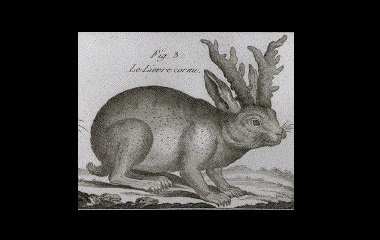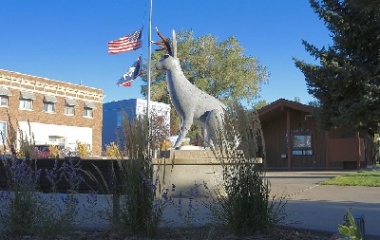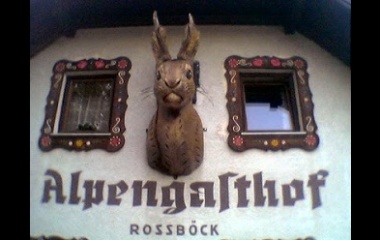What is a Jackalope?
A Jackalope, as anyone from America’s “wild west” would be quick to tell you, is a rabbit with a large pair of antlers. Although Jackalope stories are relatively new, they have caught on like wildfire. Today, this unlikely creature can be found in logos and cartoons around the world.
Characteristics
Physical Description
The Jackalope’s appearance is straight-forward. It has the body of a hare: a large, sandy brown, athletic rabbit native to the western United States. A pair of antlers sits just in front of the hare’s long, wide ears. Usually, these antlers are white and branched, like a deer, but sometimes, they are straight or twisted, like an antelope.
Special Abilities
The Jackalope may look adorable, with its floppy ears and fluffy tail, but don’t be deceived. These bunnies pack a punch!
Hares are known for their large size and powerful back legs, and Jackalopes are even bigger and stronger than their athletic cousins, making them nearly impossible to capture. They run so fast that only the trail of dust behind them is visible, and if you do manage to corner one of them, you will probably beat a hasty retreat after being kicked, clawed, and gored with antlers.
Jackalopes are known to have a taste for mischief. They easily understand human speech, and they can even parrot simple phrases back. One of their favorite tricks is to sit in the darkness, outside of a circle of cowboys gathered around a campfire, and echo their songs.
A female Jackalope’s milk is said to have medicinal qualities, and it is very valuable in a few, pocketed markets.
Cultural Representation
History
Legends of horned rabbits are not limited to the United States, no matter how much they boast about being the homeland of the Jackalope. Persian people were painting horned rabbits as far back as the thirteenth century, and the medieval and renaissance ages saw an explosion of horned rabbits, described in bestiaries and natural history books. Still, by the eighteenth century, the adorable hybrids were had been renounced by scientists, and they became the stuff of fiction.
Then, in 1932, a pair of brothers in Wyoming went on a hunting trip. After bagging a number of “jackrabbits” (or hares), they returned to their home, where they had been dabbling in taxidermy. Douglas Herrik dumped the jackrabbit carcasses next to a pair of deer antlers, and before he could turn away, inspiration struck. He found a way to implant the deer antlers onto the hare’s head, so that they appeared to grow there naturally, and he named his creation a “jackalope.” He sold the bizarre creature to a hotel, where it attracted crowds of curiosity-seekers. Then, he began producing more Jackalopes, as did other taxidermists in the west. Soon, horned rabbits could be found in almost every bar or hotel in the western United States.
Modern Appearances
In a short time, the Jackalope became an iconic symbol of the wild west. Jackalope postcards, t-shirts, shot glasses, and keychains can be found in gift shops all over the west. In Wyoming, an official Jackalope hunting season draws hundreds of tourists into “Jackalope territory” for a one day jamboree.
Numerous children’s books have been written about the charismatic, horned rabbit, and two musical bands are named after him. Pixar even dedicated Boundin’, one of their award-winning short films, to the Jackalope.
Outside of the west, Jackalopes have become associated with craft brewery (perhaps because cowboys claim that the elusive creature can be drawn out of hiding if it is offered a glass of fine whiskey). Breweries in the eastern US and Australia have made the Jackalope their logo.
Explanation
Taxidermists may not be the only agents who are mass-producing Jackalope specimen. In nature, a virus called Shoe papilloma virus can create, rigid warty growths on a rabbit or hare’s face. These grotesque structures can look like antlers, if they sprout from the animal’s forehead, which has lead some scholars to believe that rabbits suffering from papilloma tumors may have inspired the horned rabbit legend.
Jackalope






No comments:
Post a Comment